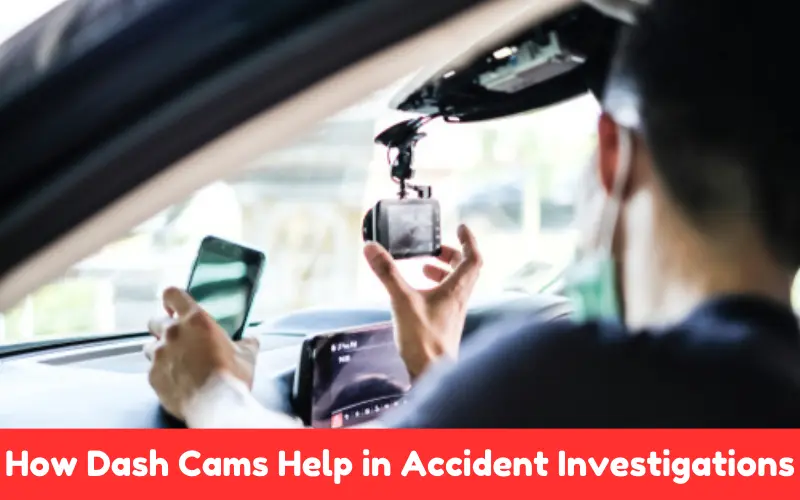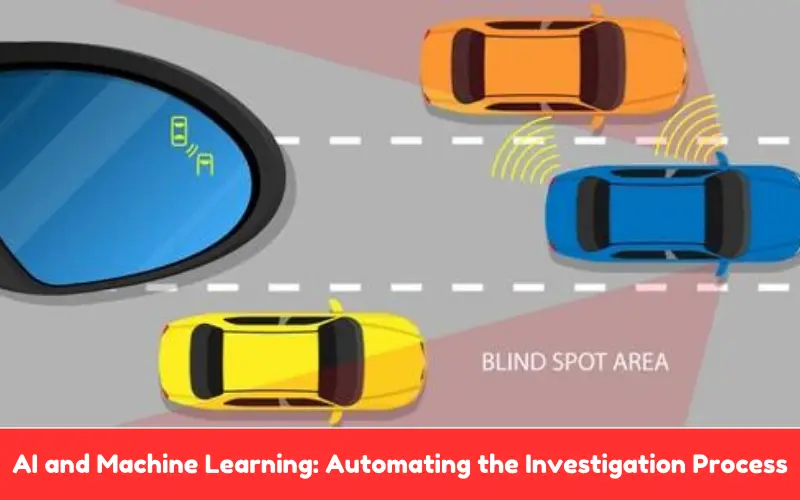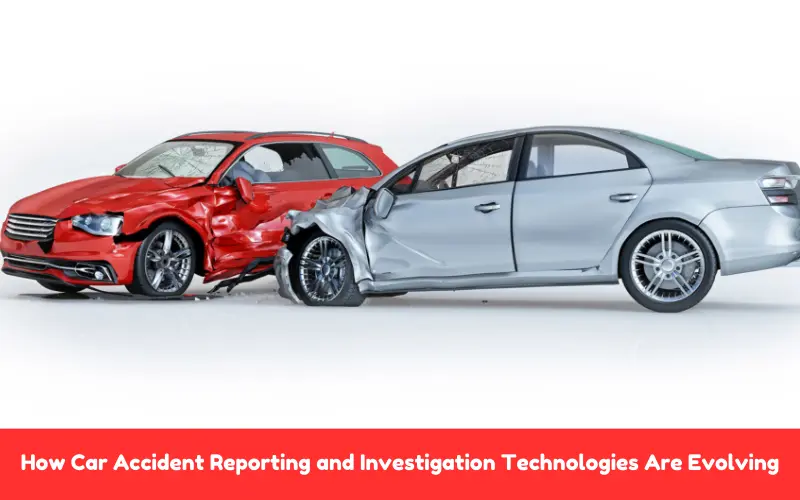Witnessing the creation of the automobile, car accidents became a tragic byproduct of that marvelous innovation.
Accident reporting and investigation comprised eyewitness accounts, police reports, and the best reconstruction skills.
However, to the great benefit of the insurance companies, car accident reporting and insurance investigations have undergone extensive change based on emerging technologies.
It starts with dash cameras or little black boxes installed in vehicles and then moves to sophisticated AI analysis tools that join in the reporting and investigation process.
Aside from making the entire process more efficient, the modernization of technology also makes accident investigations more accurate, leading to fairer and just distribution of legal liability and insurance claims while potentially improving the safety standards of future automobiles.
In this blog post, we look at the trends in car accident reporting and investigation technologies with a focus on how they improve road safety and accountability.
If you or a loved one was involved in a car accident, consult an attorney experienced in car accidents for guidance and support.
Article Summary
- Dash Cams: The Eyes on the Road
- How Dash Cams Help in Car Accident Reporting and Investigation
- Telematics: Data from the Vehicle Itself
- AI and Machine Learning: Automating the Investigation Process
- Drones and 3D Mapping: Reconstructing the Scene from Above
- Smartphones and Connected Vehicles: Instant Reporting at Your Fingertips
- Benefits of Smartphone and Connected Vehicle Technologies
Dash Cams: The Eyes on the Road
A car comes to a sudden stop in the right lane. The driver quickly whips around and almost rear ends someone in the left hand lane.
A short while later, that same driver cuts someone off instead of blending into the traffic flow. Without a dashcam, the idea of helping to provide an objective account of the incident would be out of the question.
In the past decade, one of the more remarkable and ubiquitous tools of car crash reporting has been the dash cam.
Possibly the most democratizing force in the history of car dash cameras, the affordable, boutique manufactured cameras have now taken a firm hold in various fleets.
Dash cams are embraced by ride hailing drivers, commercial sectors (such as taxi, Uber, and Lyft), and everyday, non commercial drivers.
The dash cam looks unobtrusively forward or, in the newer generation, gazes upon the car’s interior space, recording the scene ahead, either in HD or 4K resolution indefinitely.
How Dash Cams Help in Car Accident Reporting and Investigation
While an eyewitness description could be inaccurate or offer a biased version of the facts, a dashcam recording offers an undisputably verifiable real time record of the events before and following an accident.
Another dimension to the credibility problem is that drivers and other onlookers provide exaggerated or untrue descriptions or testimonies of events that transpired too quickly and naturally for such counterfeits.
In most accidents, a dispute often surrounds the issue of negligent footage, which can clearly show which drivers initiated an accident by responding carelessly, running a red light, cutting someone off, or making an illegal turn.

For police officers investigating the cause of an accident and for the drivers themselves, this evidence can help determine who was at fault. Insurance companies are now accepting increasing amounts of dashcam footage as part of an inquiry into a claims process.
It’s compelling evidence for when people attempt to claim benefits they’re not entitled to, for instance, in a whiplash case where footage can play a crucial role in disproving such a claim.
Dash cam footage can help expedite claims and prevent fraud by filthy claimants. Others are tried, tested, and equipped with GPS tracking, speed monitoring, and artificial intelligence to index driving anomalies such as sudden swerves.
For those users with advanced systems, the dashcam can be a mobile training tool, providing data not only in the event of an accident but also in the moments before.
Telematics: Data from the Vehicle Itself
Telematics systems create a new gold standard in accident reporting, especially for fleets and other commercial drivers.
These low cost devices use GPS, accelerometers, and other electronic sensors to record a vehicle’s speed, location, and movements.
They can warehouse that information and, when an accident occurs, quickly assimilate the data to tell a story of what driving events occurred in the minutes and seconds leading up to the crash.
- Precise Data Collection: Telematics records the condition of the vehicle, speed, decelerations, and even G-forces experienced at the time of impact, conclusive for investigators who need to determine which force caused the crash and how the vehicle was being driven.
- Reconstructing the Accident: Through telematics, the investigator can create a timeline of events, piecing together how long it took the vehicle to come to a standstill, when the brakes were applied, how it reacted to the impact of the collision, and so on.
- Preventing Future Accidents: In addition to using telematics to reconstruct crash scenes, many companies use the devices to avert accidents before they occur in the first place. By tracking variables such as speed, rapid acceleration, and jerking, fleet managers can see risky driver patterns before they culminate in an accident.
Telematics is cars, with insurers offering discounts to motorists equipped with systems and policies based on telematics, calculating prices from driving data to reflect driving behavior and reward prudent drivers.
AI and Machine Learning: Automating the Investigation Process
With the help of artificial intelligence (AI) and machine learning, the causes of an accident might be resolved rapidly, and the typology of dangerous driving behavior established.

- Crash Detection and Notification: AI can determine that the vehicle has crashed and automatically call for help, as well as provide details such as location, vehicle make, and other information. The idea is that emergencies could arrive much quicker.
- Data Analysis: AI can mine data from the dash cam, telematics, and vehicle sensors together to develop an early understanding of how the crash occurred. By cross referencing the data from multiple systems, AI can identify inconsistencies and potential crash factors, such as road surface conditions or driver response.
- Identifying Patterns: Another important use of AI is finding patterns and causes of accidents. For example, a system looking at accident data from many different kinds of vehicles might identify similar accidents caused by the same problem: say, the same brake system failing. Automakers could either issue a recall or improve safety features for the next year’s model.
Furthermore, AI is beginning to be used in some insurance platforms to make claims processing more efficient.
Instead of sending human adjusters to investigate accidents and assess damages and liability, AI systems can review accident reports, photos, and video recordings of incidents to make recommendations that move the resolution process along.
Drones and 3D Mapping: Reconstructing the Scene from Above
Some of the latest and most promising developments in how accidents are investigated come from drone and 3D mapping technology improvements.
Police and accident investigators have increasingly been using drones to film accident scenes from the air to get a picture that is hard to access from the ground level.
- Quick Scene Documentation: Drones can quickly take high quality pictures and video of a crash scene. Investigators can quickly document the scene before it’s cleaned by traffic or emergency vehicles.
- 3D Reconstruction: Take the data from the drones, and map out the entire scene in three dimensions so that you can see it from various angles, hear the audio, and track all the vehicles and other objects to see how they were moving when the crash occurred.
- Improved Safety: Investigating accidents often forces these investigators out of the car, putting them in harm’s way. However, a drone can collect the necessary data much longer and far more safely.
They can be especially useful in multi vehicle accidents where it’s important to see the complete crash site or accidents in remote locations.
Having a drone provide an extremely detailed view of the accident can help investigators assemble what happened and who might be at fault.
Smartphones and Connected Vehicles: Instant Reporting at Your Fingertips
Car accident reporting has also been made simpler by the proliferation of smartphones. Many insurance companies now provide mobile apps that allow the driver to submit the accident, upload pictures of the damage, file a claim, and all from their phones.

Some apps even provide step by step instructions for what to do following the accident, ensuring that the driver collects the right information and does not end up paying expensive penalties due to his mistakes.
At the same time, the technology of connected vehicles is advancing. Many modern cars have in-built systems that automatically notify authorities about an accident and provide real time information to first responders.
Benefits of Smartphone and Connected Vehicle Technologies
The claims process can begin much earlier. A driver can file an accident report immediately instead of waiting to return home.
A connected driver can use the camera on his mobile phone to document the scene. Photos can be invaluable in establishing liability and estimating damage.
In the case of a serious wreck, a connected vehicle can automatically summon assistance if the driver is knocked unconscious or otherwise incapacitated.
We have harder working technologies evolving around car accident reporting and investigation.
From dash cams and telematics to AI-based analysis and beyond to drones which help not only track down a hit and run offender but also map out the scene and further details of the incident.
There are more ways available to drivers, the police, and insurers to resolve an accident more speedily and with greater levels of detail and accuracy.
This variety of technologies will continue to provide robust solutions that make it easier for all stakeholders to deal with the occurrence of a car accident.
Whether you’re a driver, investigator, or insurer, knowing about these innovations can help keep you on top of changing times and ensure you can get justice and accountability within the confines of the highway.

